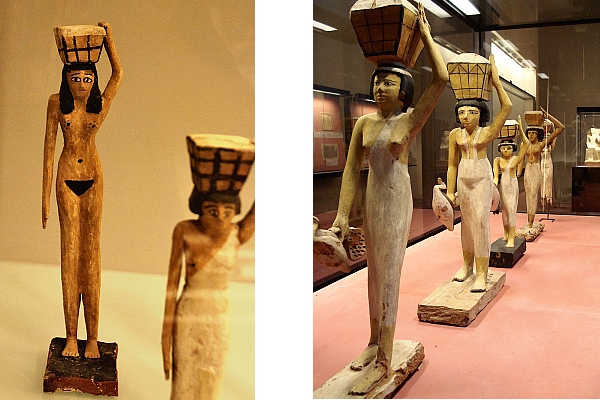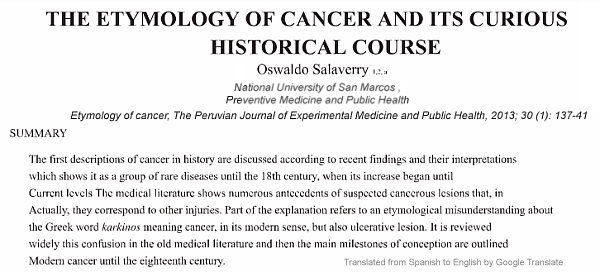LOOK INSIDE

BUY AT AMAZON



DOWNLOAD FREE PDF

INDEPENDENT REVIEWS

STUDIES CONFIRM BRA LINK
2019:
NEW STUDY: The Melatonin Bra and Breast Cancer Connection
This new study proves that wearing a bra at night significantly reduces the production of melatonin to the point where, in effect, melatonin's ability to inhibit cancer growth is ineffectual. What makes matters worse is that melatonin production declines with age so that anything that restricts its production in later life will have a detrimental effect upon the immune system's ability to fight breast cancer (and other cancers). This is another reason why postmenopausal women are more prone to breast cancer. (Fred Harding)
2019:
Tyranny of the Bra: The New Evidence in 10 Studies
The historical evidence presented is meticulous in detail and indisputable and is backed up by 9 clinical studies, of which 7 are peer-reviewed. Ditching your bra or reducing the time you wear one WILL GREATLY REDUCE YOUR RISK BREAST CANCER.
2016:
Journal of Oncology Research and Treatment
Wearing a Tight Bra for Many Hours a Day is Associated with Increased Risk of Breast Cancer. Conclusions: This study demonstrated a correlation between wearing a tight bra for several hours per day and an increased risk of developing breast cancer.
2015:
African Journal of Cancer
Comparative study of breast cancer risk factors at Kenyatta National Hospital and the Nairobi Hospital
2014:
European Institute of Oncology
Trends in the distribution of breast cancer over time in the southeast of Scotland and review of the literature
THE SCOTSMAN NEWSPAPER REVIEW
Bras linked to rise in breast cancer
2014:
Fred Hutch Study
Study financed by National Cancer Institute confirms bra and breast cancer link (Fred Harding)
2012:
Journal of Zhejiang University Medical Sciences
A case-control study on risk factors of female breast cancer in Zhejiang province. Univariate conditional logistic regression showed that family history of malignant tumor and breast cancer, housing decoration in last 10 years, mammary hyperplasia, adverse life events, bra with steel rings, sleeping with bra, high fat and pickle intake, poor sleep were positively related to breast cancer;
2011:
Gynecology and Obstetrics
Mammary pathologies generated by the sustained use and incorrect selection of the brassier in patients who come to the mastology clinic. Published,in Spanish, confirms that wearing bras are causing breast disease and cancer. Use Google translate for English translation. Department of Public Health, University of Carabobo, Venezuela.
2009:
Journal of Southern Medical University
Risk factors of breast cancer in women in Guangdong and the countermeasures. A case-control study was performed to identify the risk factors of breast cancer between premenopausal women and postmenopausal women. Chi-square test and unconditional logistic regression were used to analyze the data... regular exercise and sleeping without bra were the protective factors.
2000:
Get It Off!
In conclusion, they found 24 case histories of breast cancer in Fiji, a culture where half the women were bra-free, but the ones getting breast disease were those wearing bras for work. Given women with the same genetics and diet and living in the same village, the results of this study speaks volumes. (Sydney Ross Singer)
1995:
Dressed to Kill
Presents evidence supporting the authors' theory that bras suppress the lymphatic system, causing toxins to accumulate in the tissues of the breasts, leading to a variety of health problems. (Sydney Ross Singer & Soma Grismaijer)
2017:
Dressed to Kill (2nd Edition)
Controversial for its challenge to established custom and medical dogma, this breakthrough book is already a classic, and in this updated edition, it continues to suggest new ways of dealing with an old and all-too-common women's health issue.
1991:
European Journal of Cancer and Clinical Oncology
HARVARD SCHOOL OF PUBLIC HEALTH
Breast size, handedness and breast cancer risk. This study found that,"Premenopausal women who do not wear bras had half the risk of breast cancer compared with bra users.
TYRANNY OF THE BRA IN 10 STUDIES: THE NEW EVIDENCE

When in the 19th century, women of all classes began to wear stays or tight-fitting corsets with their breast binding characteristics, doctors like James Nooth, surgeon to the Duke of Kent and a physician suspected that such female attire were in some way the cause of the breast cancer cases he was treating, but did not know why.
Fast forward to 1991, and professor of Epidemiology Dimitrios Trichopoulo of the Harvard School of Public Health, Boston, Massachusetts. Regarded by many as "a giant among giants in the field of epidemiology", he published a major study in the European Journal of Cancer which showed that premenopausal women who did not wear bras had half the risk of breast cancer compared with those women of their age who were bra users.
The leading authority in the USA, the American Cancer Society (ACS) described by "The Chronicle of Philanthropy" in 1992 was "more interested in accumulating wealth than in saving lives" buried the Harvard study behind a cloak of secrecy. Then in 1995 the ACS had a rude awakening. It received a preview of a study by anthropologists, Sidney Singer and Soma Grismaijer, who had carried out a study which revealed that women who wear bras over 12 hours daily have a dramatically increased risk of developing breast cancer compared to bra-free women and those who wear bras 24/7 have more than 100 times the chance of developing breast cancer.
Prewarned, when Singer/Grismaijer published their study in a book "Dressed to Kill", the powerful media control and public relations resources of the ACS ensured that the study would be stopped in its tracks. For decades the study was ridiculed but the anthropologists stuck to their guns. Their study just would not go away and something had to be done to quash the "myth" or risk financial disaster if it was proven true. By 2014 the charity had accumulated $870 million in funding.
Dr. Epstein, chairman of the Cancer Prevention Coalition, wrote that the ACS is the tail that wags the dog of the policies and priorities of the NCI (National Cancer Institute), and the society called upon their government funded buddy to come to the rescue. In 2014, the NCI financed its own study in September 2014, which was conducted by the Fred Hutchinson Cancer Research Center in Seattle, an organisation that receives millions of dollars in funding from the government agency. The Press Release from Fred Hutch declared that "Bras Cause Breast Cancer? No support for that claim, Fred Hutch study finds". So that was that — or was it? Enter me!
In 2004, a dear friend of the family, Gillian Wood, died of breast cancer, and I was determined to find out why. Consequently, I studied breast cancer in depth which culminated in the publication of a book in 2005 and revamped version in 2007. Although, I identified the growing evidence that environmental carcinogens was a major factor in breast carcinogenesis, I failed to answer my original question, why Gill had got the disease. A major piece of the jigsaw was missing. Then several years later, I learned that she had worn a bra 24/7, day and night. It was a bolt from the blue.
From that day onwards I proceeded an intensive period of research and to my amazement, I found nine independent studies which confirmed the link between wearing bras and breast cancer. In 2016, I read an article in an English newspaper with the headline,"Your bra could kill you — and other breast cancer myths busted." Upon reading the article which focused on the 2014 Fred Hutch study, which from my own studies was seriously flawed. I was so incensed that I decided to rebut the article and write a new book, this one, "The Tyranny of the Bra: The New Evidence in Ten Studies." What you will read in my book, the 10th study, will both shock you and astound you. The evidence presented is meticulous in detail and indisputable. Ditching your bra or reducing the time you wear one WILL GREATLY REDUCE YOUR RISK BREAST CANCER.
THE ANCIENT EGYPTIAN BREAST CANCER MYTH

When I first began researching breast cancer, in 2004 and thereafter, I often came across statements, touted by various cancer research organisations such as the American Cancer Society and the National Cancer Institute as well as numerous medical journals and press stories, saying that it was an ancient disease, so ancient in fact that it was to be found in ancient Egypt. For example, Kottapurath Kunjumoideen MD, writing in MedicineWorld.Org, which is described as a peer reviewed website dedicated to medical information, stated categorically that the oldest known description of breast cancer is to be found in two ancient Egyptian papyri, known as the "Edwin Smith" and "George Ebers" papyri, written between 3000 and 1500 BC.
It just so happens that I am a historian, and ancient Egyptian history is a particular speciality of mine. So, when I read what was being said about breast cancer being found in the two specifically named ancient Egyptian papyri, I knew this was completely untrue. I have studied those papyri at great depth, and I was surprised that anyone who would have read them could possibly come to the conclusion that breast cancer existed in ancient Egypt.
I smelled a rat! While I do not dispute that some cancers might have existed in the past, perhaps skin cancer, the references to "breast" cancer was cast about with such generalisation that I began to wonder whether we were looking at someone's deceptive interpretation of these papyri, which was then copied by others, until it eventually became, in reality, a factoid.
As you will shortly find out, this is exactly what has happened. Furthermore, it transpires that this was a deliberate act of deception, so massive that even now I am astonished how the perpetrators have gotten away with it for so long - and still do. What I am about to show you makes the Watergate scandal pale into insignificance.
Take a look at this portion of the Edwin Smith Papyri as translated by the highly esteemed Egyptologist James Henry Breasted (1865-1935) and test your powers of observation. Can you recognise some telling clues of the deception about which I speak. What is described is certainly not breast cancer by any stretch of the imagination.


CONFIRMED IN PEER-REVIEWED MEDICAL JOURNAL
It was with pleasure that I found that Professor Oswaldo Salaverry in his article CANCER ETYMOLOGY AND ITS HISTORICAL CURIOUS COURSE, published in the Peruvian Journal of Experimental Medicine and Public Health in 2013 has confirmed the main thesis of my book. The following quote has been translated from Spanish to English by Google Translates, so the English is not perfect. A summary of Salaverry's article reads:
"The first cancer descriptions in history are discussed according to recent finding and their interpretation, which show it as a group of unknown diseases until the 18th century, which started to increase to actual levels. Medical literature shows a variety of what was considered cancer lesions, which are actually different lesions. This is partly due to an etymological misunderstanding of the Greek word Karcinos that, in a modern medical sense, meant "cancer", but also ulcerative lesion. The confusion is widely in the ancient literature and the main landmarks of modern cancer conception up to the 18th century are outlined."

With respects to my statement that breast cancer was not found in ancient Egypt, Professor Salaverry agrees with my assessment. The following quote has been translated from Spanish to English by Google Translates, so the English is not perfect.
In Egypt, doctors were trained and grouped in the "houses of life", a mixture of temple and school, in they got to develop a certain specialization doctor with experts for various ailments that, we may assume, they were the most frequent; between them eye diseases and even parasitic; but not there was a tumor specialist.
Despite this, the medical literature has tirelessly repeated that in two of the so-called "medical papyri" is recognized cancer. The truth is that if we read directly the texts it is clear that the injuries described in the Edwin Smith's papyrus are for ulcerative lesion, torpid but in no way assimilable to injuries cancerous according to contemporary criteria, while that of the Eber's papyrus, only mention is made of breast tumors (by the way, in men) and what else appears to correspond to ulcerated tumors."
I was also pleased that Professor Salaverry had also referred to my earlier book "Breast Cancer: Cause — Prevention — Cure", which shows that my expertise in breast cancer Etymology is respected, and my works have also been quoted in other peer-reviewed medical literature.
